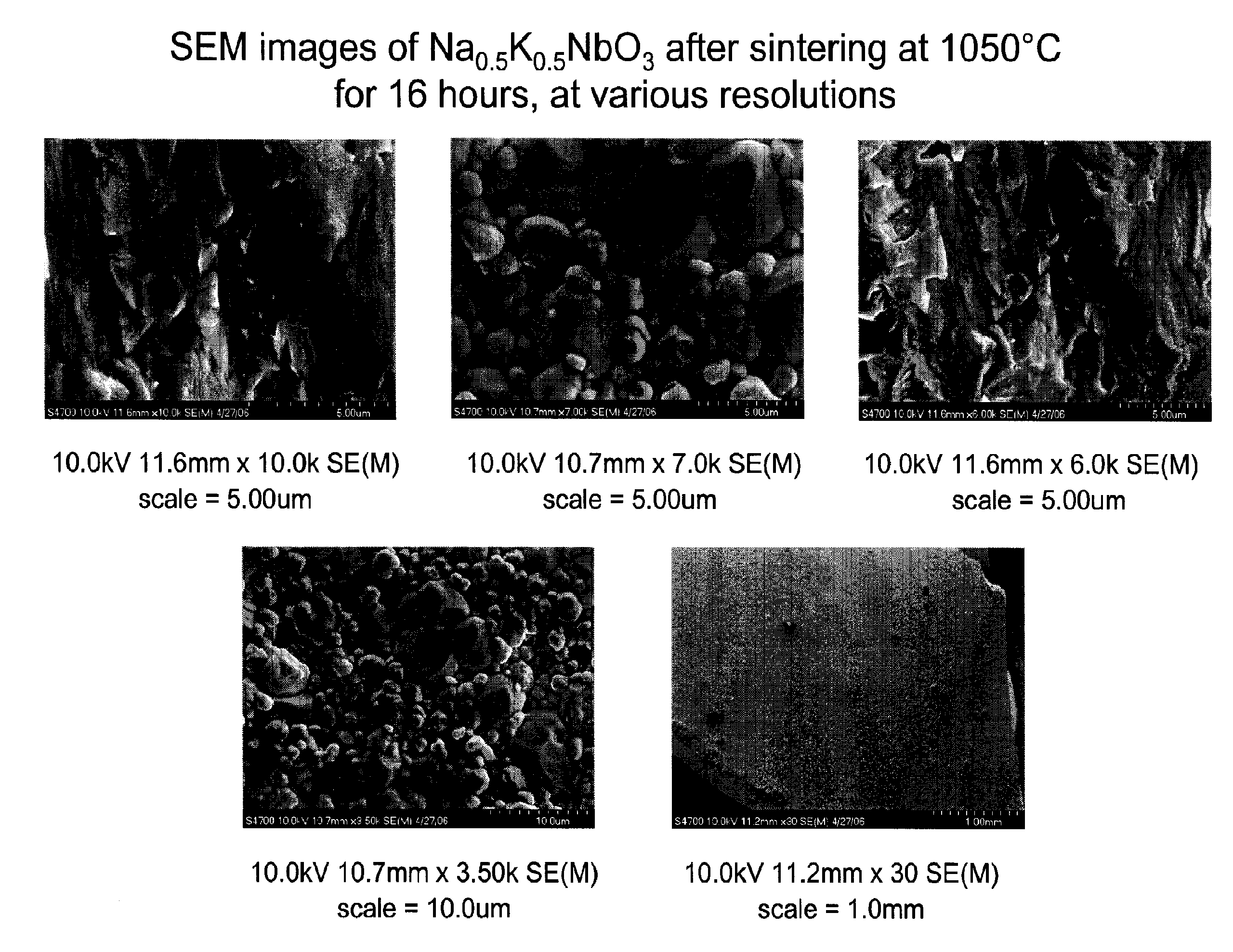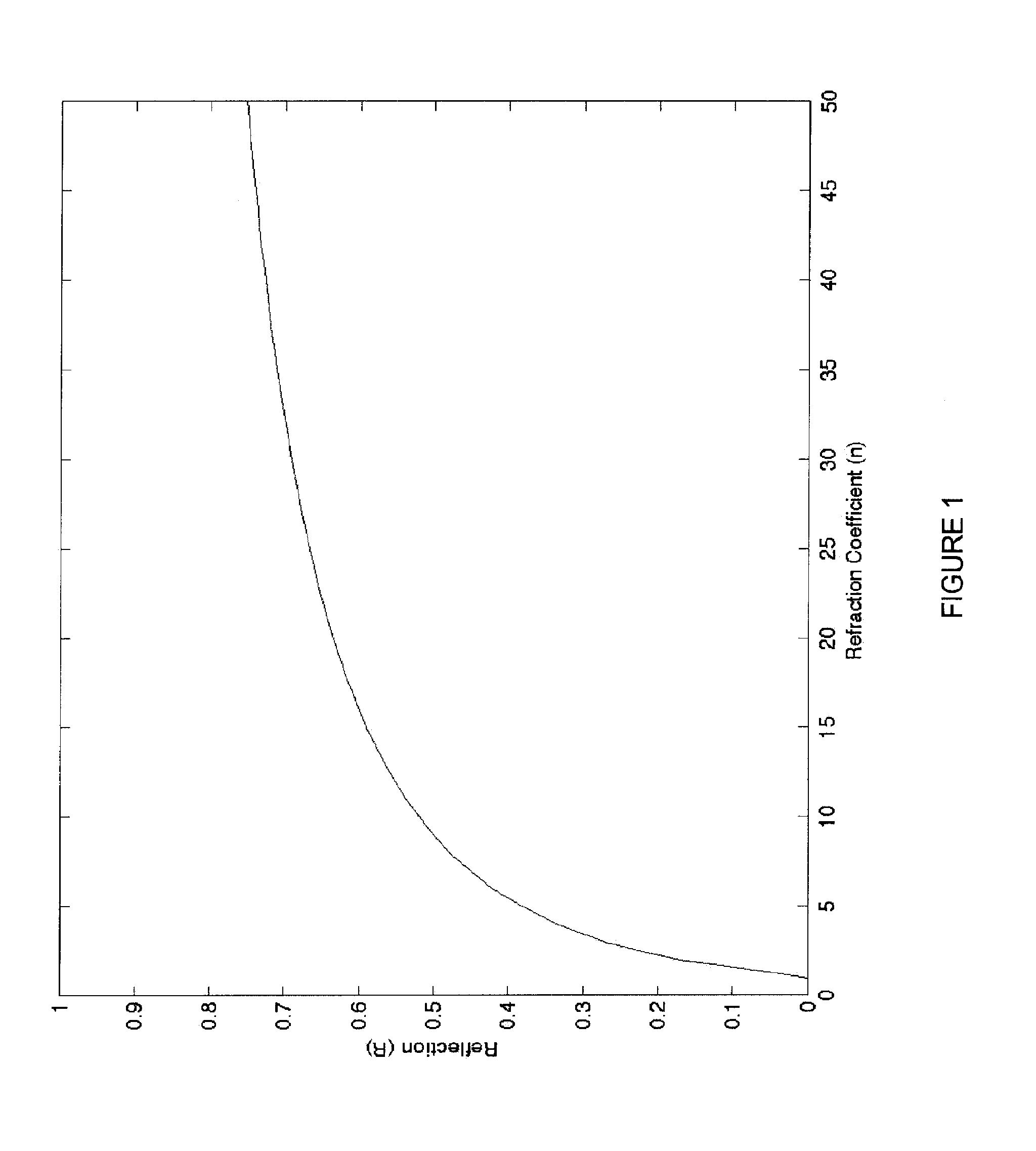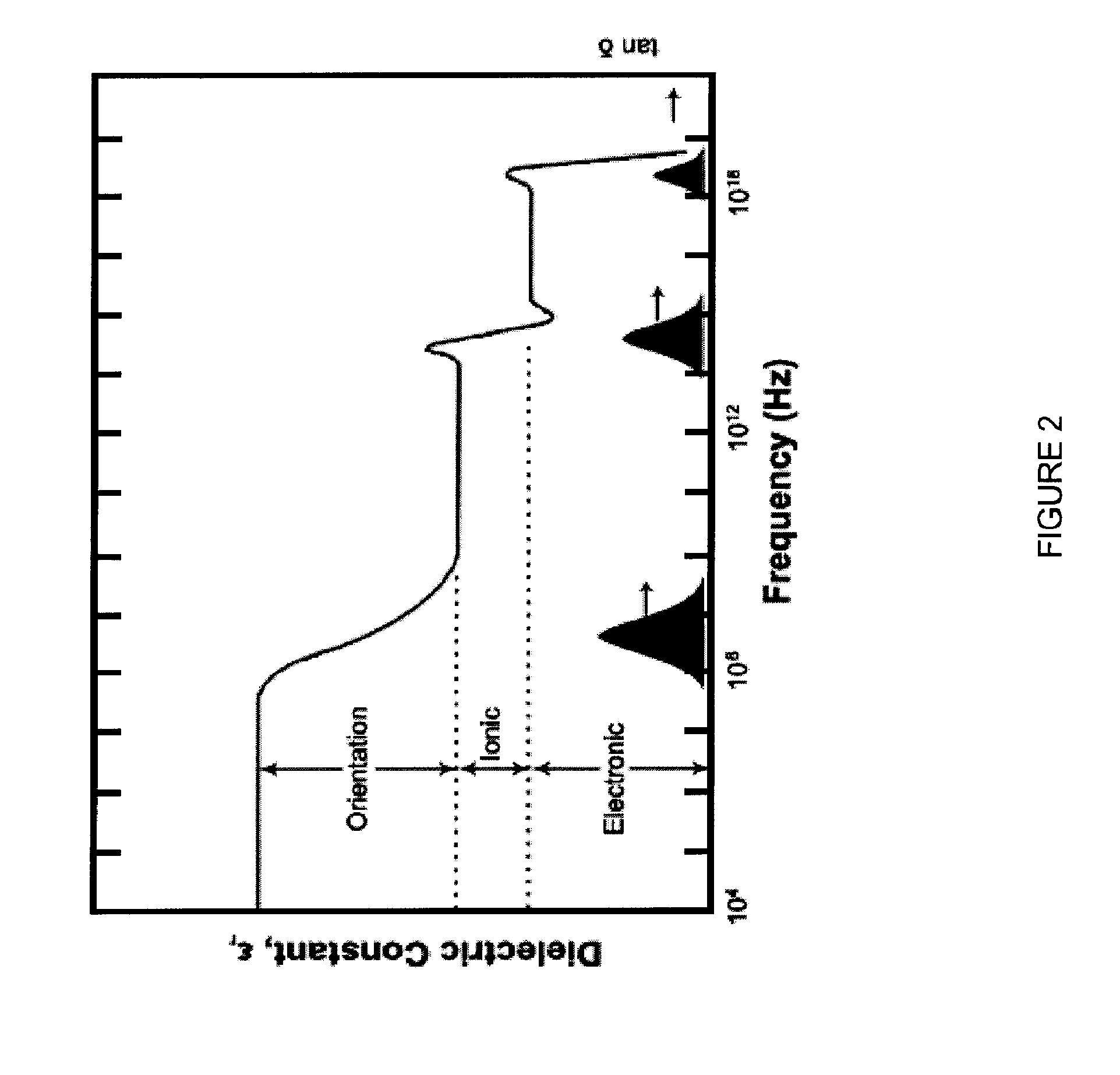Colloidal suspensions
- Summary
- Abstract
- Description
- Claims
- Application Information
AI Technical Summary
Benefits of technology
Problems solved by technology
Method used
Image
Examples
example 1
Preparation of Particulate Material
[0129]The following teaches methods of preparation of particulate material generally, and methods for preparation of sodium potassium niobate specifically. Potassium carbonate (20.4 g; 0.15 mol), sodium carbonate (15.6 g; 0.15 mol), niobium (V) oxide (77.3 g; 0.3 mol), purchased from Sigma Aldrich and Alfa Aesar, and ethanol (111 mL) were placed in a Nalgene bottle. Zirconia balls (645 g; 0.25 inch diameter) are added and the bottle agitated for 8 hours at room temperature, after which time the balls are removed and the mixture allowed to air dry.
[0130]The resulting solid was sieved through an 80 mesh sieve, and the isolated powder heated in an oven for 5 hours at 950° C. The resulting solid, ethanol (111 mL) and Zirconia balls (645 g; 0.25 inch diameter) were then placed into in a Nalgene bottle and agitated for 8 hours at room temperature. The balls were then removed, the mixture allowed to air dry, and the resulting solid was sieved through an 8...
example 2
Preparation of Sodium Potassium Niobate Sample for Analysis
[0131]The sodium potassium niobate powder isolated in Example 11 was pressed at 1000 psi, cold iso-static pressed at 45,000 psi and sintered in air at 1050° C. for one hour, to produce a pellet suitable for analysis. The sample had the characteristics shown in Table 5:
TABLE 5Dry WeightSuspended Weight0.23gWet Weight0.42gLiquid Density0.817g / ccTheoretical Density4.51g / cc3Volume Open Porosity0.036Apparent Volume0.195Bulk Volume0.232% Open Porosity0.157Bulk Density1.677% Open Porosity0.157Bulk Density1.677Volume of closed porosity0.109% Closed Porosity0.47% Theoretical Density0.371
example 3
Particle Size Analysis of Sodium Potassium Niobate
[0132]The sodium potassium niobate sample prepared in example 2 was analyzed in a Beckman Coulter LS 230 Laser Diffraction Particle Size Analyzer, using standard operating procedures. Illustrative particle distributions are shown in FIG. 3.
PUM
| Property | Measurement | Unit |
|---|---|---|
| Temperature | aaaaa | aaaaa |
| Length | aaaaa | aaaaa |
| Fraction | aaaaa | aaaaa |
Abstract
Description
Claims
Application Information
 Login to View More
Login to View More - R&D
- Intellectual Property
- Life Sciences
- Materials
- Tech Scout
- Unparalleled Data Quality
- Higher Quality Content
- 60% Fewer Hallucinations
Browse by: Latest US Patents, China's latest patents, Technical Efficacy Thesaurus, Application Domain, Technology Topic, Popular Technical Reports.
© 2025 PatSnap. All rights reserved.Legal|Privacy policy|Modern Slavery Act Transparency Statement|Sitemap|About US| Contact US: help@patsnap.com



